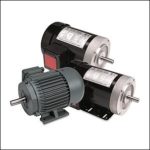These days, we are all under pressure. This is evident in the health conditions that are pervasive in our society, such as hypertension. In fact, hypertension is so common that it has become a cultural norm. Fortunately, there are a number of beneficial interventions including dietary changes, lifestyle modifications, and medication. On the other hand, pulmonary arterial hypertension (PAH) is a life-threatening condition that is progressive and incurable. The impact of this complex disease is devastating as it negatively affects so many aspects of health. The approach to managing it requires thoughtful consideration of various factors in order to help individuals maintain the best possible function and quality of life.
Pulmonary arterial hypertension is considered a relatively rare disease as about 10 to 15 people per million are diagnosed annually in the United States. The condition results from a narrowing of the blood vessels in the lungs, which causes the pressure in the pulmonary arteries (the vessels which transport deoxygenated blood from the heart to the lungs) to become abnormally high. As a result, the heart has to pump harder and becomes enlarged, leading to right-sided heart failure. Symptoms of PAH include shortness of breath, dizziness, chest pain, swelling of the legs, increased heart rate, heart palpitations, and fatigue. Various diagnostic tests are typically administered, including blood work, pulmonary function testing, EKG, and echocardiogram. In order to confirm the diagnosis, a right cardiac catheterization must be done to measure pressure in the pulmonary arteries.
There are multiple types of PAH which have been categorized by the World Health Organization (WHO) into five groups based on the different causes. WHO Group 1 includes Idiopathic PAH (IPAH), which has no known cause, and Heritable PAH (HPAH) which is due to genetics. Additionally, this category encompasses pulmonary hypertension that develops due to underlying diseases which affect the liver, heart or connective tissues, that arises secondary to an infection such as HIV, or that occurs as a result of side effects of certain medications (e.g. diet pills). WHO Group 2 includes individuals with left-sided heart disease, which is the most common cause of PAH. In this scenario, the blood returning to the heart becomes backlogged due to dysfunction related to the pumping mechanism or the valves in the left side of the heart.
WHO Group 3 includes patients who are diagnosed with chronic lung diseases or who suffer from low oxygen levels, known as hypoxia. This category consists of obstructive lung conditions (COPD and emphysema), restrictive lung conditions (interstitial lung disease, pulmonary fibrosis), sleep apnea, and conditions that develop due to prolonged exposure to high altitudes. In all of these situations, the arteries tighten and restrict blood flow to the lungs. WHO Group 4 includes individuals who have been diagnosed with chronic thromboembolic pulmonary hypertension (CTEPH). In this case, blood clots proliferate in the lungs and cause strain on the right side of the heart due to scar tissue. Individuals with CTEPH may be candidates for surgery to remove the clots or may be prescribed medication to reduce them. WHO Group 5 classifies pulmonary hypertension that develops with no known cause but may occur in the presence of other diseases, such as sarcoidosis or sickle cell anemia. In these cases, the mechanism of the disorder is not well understood.
A functional classification system has also been established for identifying the manifestation of PAH symptoms. The higher the class, the more severely the symptoms impact function. WHO Class I includes individuals with no symptoms during activity or at rest, therefore activity is not usually limited. Patients in WHO Class II include those who do not have any symptoms at rest however become symptomatic (e.g. shortness of breath, fatigue, near fainting) when performing normal exertional activities, such as stair climbing. Individuals who fall into Class III may not have symptoms at rest however have significant limitations with activity. Class IV includes patients who exhibit severe symptoms during any activity and may also have symptoms at rest. They have right-sided heart failure and may experience swelling in their legs as well as fainting. This system serves to identify an appropriate treatment plan and can also be used as a guideline for prescribing activity.
While there have been medical advances in the management of PAH, there are other aspects of care that must also be addressed. In previous years, physicians advised patients with PAH to avoid exercise as it was regarded as dangerous. Recent research has supported that exercise can be implemented safely in this population, however, it should be monitored by a health professional. Individuals with chronic diseases often experience challenges when it comes to being active, making it difficult to maintain health. Exercise tolerance is significantly limited in patients with all forms of pulmonary hypertension due to the toll that the symptoms take on the body. Generally speaking, light resistance training and light to moderate aerobic activities (e.g. walking, swimming) are considered safe.
In the past few years, WBV has emerged as a new training modality for people with PAH. Due to its convenience and efficiency, WBV may be an ideal choice to facilitate exercise in this population. The initial research on the effects of WBV on patients with PAH has yielded positive results pertaining to function and health-related quality of life (HRQoL). In a controlled-pilot study, subjects with stable Class II and III PAH participated in 4 weeks of WBV at a frequency of 20 Hz. Following completion of the routine, significant improvements were seen with regard to walking distance, cardiopulmonary exercise test outcomes, muscle power, and health-related quality of life as compared to a control group. Researchers noted that all subjects tolerated WBV with no significant adverse effects. While specific training parameters have not been standardized, this study demonstrated the potential benefits of WBV for these patients.
Overall, WBV can serve as a unique exercise tool for people who suffer from PAH. While further research must be done to identify the most effective methods of use in this population, the preliminary results show promise. When used as part of a comprehensive program, WBV can set these individuals on the path to achieving better function as they fight the battle to maintain their health.
References:
Exercise Training in Patients with Pulmonary Arterial Hypertension: A Case Report. Cardiopulmonary Physical Therapy Journal. Shoemaker et al, 2009.
Oscillatory Whole-body Vibration Improves Exercise Capacity and Physical Performance in Pulmonary Arterial Hypertension: A Randomised Clinical Study. Heart. Gerhardt et al, 2017.
American Thoracic Society
https://www.thoracic.org/patients/patient-resources/breathing-in-america/resources/chapter-17-pulmonary-hypertension.pdf
Pulmonary Hypertension Association
https://phassociation.org
Pulmonary Hypertension RN
http://pulmonaryhypertensionrn.com/functional-classification-of-pulmonary-arterial-hypertension-pah/
Should You Exercise if You Have Pulmonary Hypertension?
https://pulmonaryhypertensionnews.com/2017/01/06/pulmonary-hypertension-and-exercise
WHO Functional Assessment for Pulmonary Hypertension
http://www.clevelandclinicmeded.com/medicalpubs/pharmacy/marapr2002/table2.htm
In osteoporosis, bones become thinner as a result of bone...
If you walk with a hunched back, or slouch at...

Prelude - part of the reason for confusion and controversy...

Is this really something people want to know and if...

You may or may not be aware that there are...